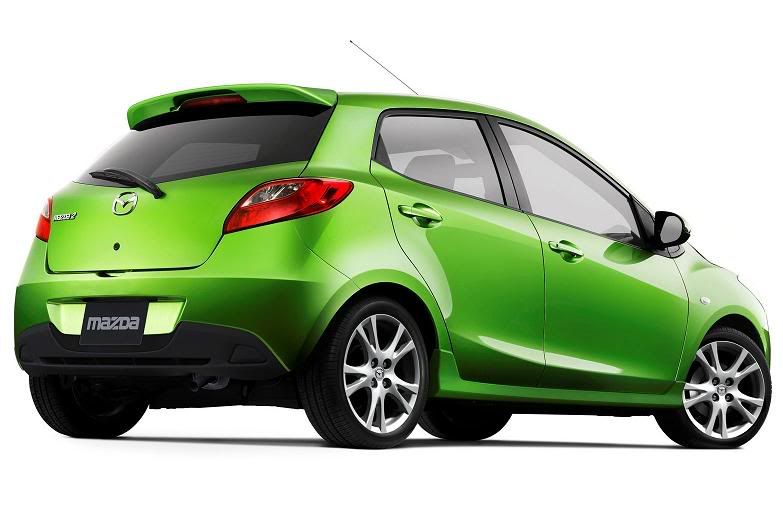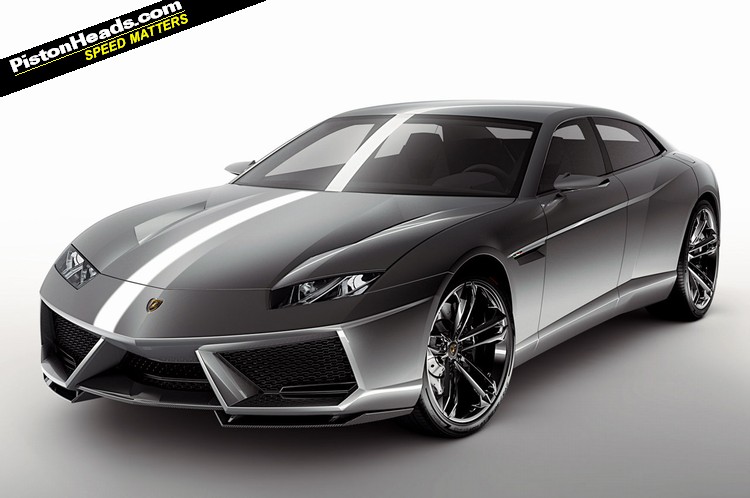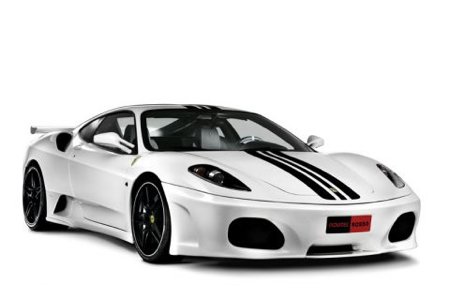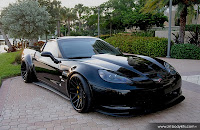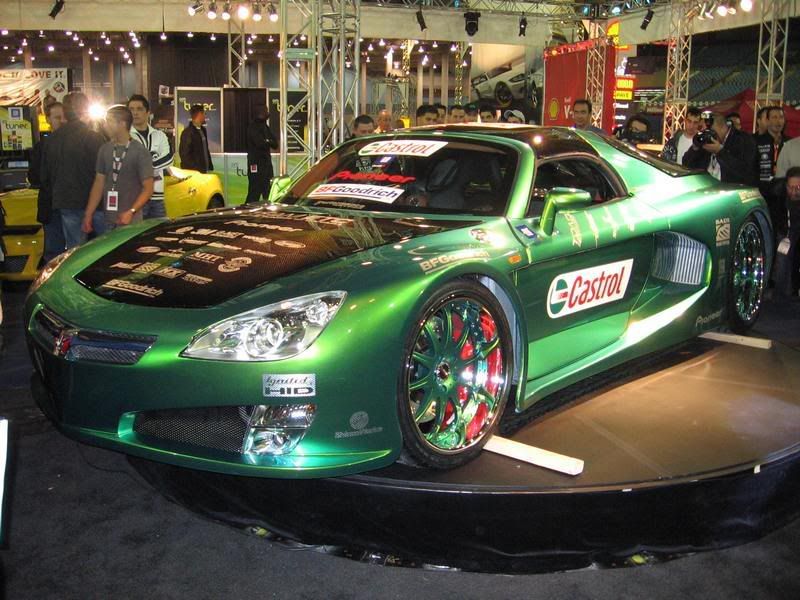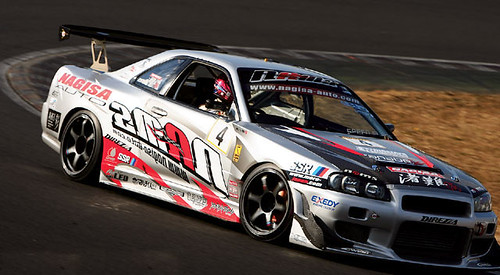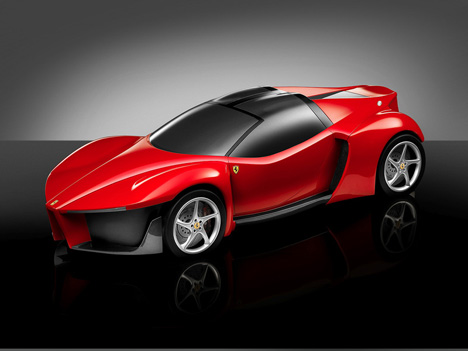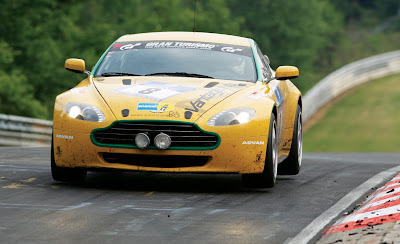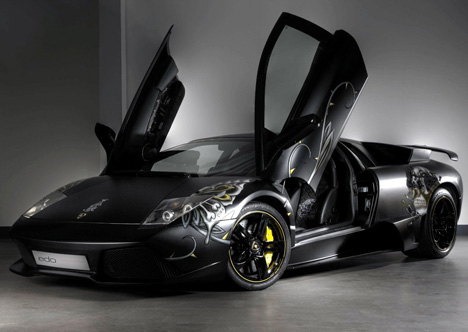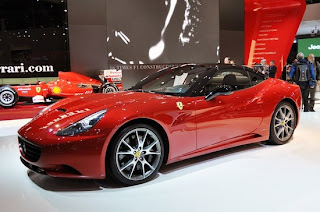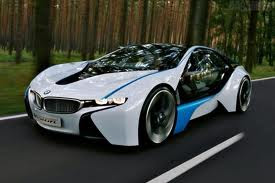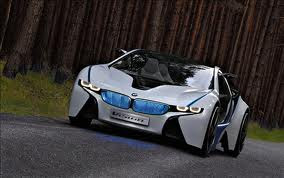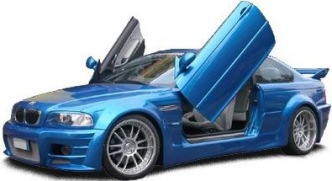Ferrari. A name that is synonomous with winning. Over 50 years of racing heritage; a heritage which includes several Formula One titles, as well as overall victories in Sports Car Racing at some of the most difficult race circuits known to exist. Tracks like Spa, the Nurburgring, and the great French classic held every year at Le Mans. Nearly every challenge the Prancing Horse of Maranello has undertaken in the last 60 years has resulted in victory. One series however was not intimidated by Italy's best. That series was the Can-Am Challenge, held between 1966 and 1974 in North America. The Can-Am, as it would become known, was perhaps the most exciting road racing series the planet has ever seen. Governed by the Sports Car Club of America, the series was run in accordance to the FIA's Group 7 rules for Sports Racing Cars. Group 7 rules were rather unlimited in many ways, which led manufacturers of all levels to run free with creativity and build some of the most technically advanced cars of their time.
In 1966, the Can Am's first actual season, the European factories had little interest in a series that only lasted from September to November and was comprised of just six events. Most of the entrants were independent teams. Teams like McLaren and Surtees, both headed by Formula 1 Champions that saw the Can Am as an opportunity to build their reputations as manufacturers. Ferrari already possessed a championship winning reputation. However, a young Mexican driver by the name of Pedro Rodriguez would fire Ferrari's first shot in what would soon become the hottest road racing series on the planet.
Bridgehampton, New York was the second round of the inaugural Can Am Series. The 2.85 mile course located in eastern Long Island would be the first time that a Ferrari would race in a Can Am event. Pedro Rodriguez was entered in a Dino 206S Coupe that September weekend. The young Mexican driver was able to achieve 22nd position on a grid filled with open-top sports racers powered by thundering American small block V-8s. The race would result in the little Ferrari not finishing due to the loss of a wheel. Rodriguez would appear again at Laguna Seca with the Dino, this time with a 18th place overall to show for his effort.

By early 1967, the Can Am was already being viewed as a fabulous series by many of the top names in North American road racing. The series caught the attention of Luigi Chinetti, the man at the helm of N.A.R.T. (North American Race Team), Ferrari's factory-backed team of choice in the United States. Chinetti would send one of N.A.R.T.'s P3/4 prototypes back to Maranello early in 1967 for modification to run in that year's Can Am Series. While at the factory, the P3/4 would receive several modifications to assist it in moving from Group 6 to Group 7 rules. The car was lowered and lightened, though the headlamps were retained. Provisions for a boot and spare wheel were eliminated, as there were no need for such luxuries in Can Am racing. The P3/4 also received a strengthened roll bar.
Ferrari's would be absent at the opening race held at Elkhart Lake, Wisconsin in 1967. Though Chinetti and the N.A.R.T. team would arrive for the season's second race at Bridgehampton. Lodovico Scarfiotti was selected to drive the P3/4 that September weekend and he achieved a grid position of 16th place. Scarfiotti, a Formula 1 veteran, would go on to drive the P3/4 to a 7th place finish in the race.
Scarfiotti would again pilot the P3/4 a week later at Mosport, one of the fastest tracks the Can Am Series raced at. The N.A.R.T. P3/4 would start from the 12th position on the grid. The weekend would result in a DNF for the Ferrari due to a crash.
The fourth race of the 1967 Can Am season was to see the most powerful sports cars in the world visit the beautiful Laguna Seca Raceway on the coast of Central California. This race would mark the appearance of two new Ferrari Can Am cars in the form of P4s. Now equipped with full glass-fibre bodies, a huge rear spoiler, and a larger 4.2 litre engine, it looked like there was a serious effort brewing from Italy's top name in racing. Chris Amon and John Williams were recruited to perform the driving duties. Amon, being the seasoned driver he was, performed well at Laguna Seca driving the number 23 Ferrari P4 from 16th on the grid to a 5th place finish. Williams also scored well on the weekend by completing 99 laps and capturing 8th place. Two weeks later, at Southern California's incredible Riverside Raceway, the Amon and Williams duo would again attempt to bring victory home for Maranello. This time the results were not as promising as Laguna Seca, with Amon finishing 3 laps down in 8th place and Williams crashing out. The final Can Am event of 1967 was held at Las Vegas. A dusty track in the Nevada desert, Vegas was known for wreaking havoc with both racers and their machines. Amon would put the P4 in 13th place on the grid, while Williams scored the grids 18th spot. Williams race was short, as a stone was ingested on lap 1, locking the throttle and leading to the retirement of the number 27 Ferrari. Amon would wind up with a DNF as well due to a crash. Despite mid-pack qualification times, the P4s proved capable of obtaining podium results.
The 1968 season would be a pivotal one for Ferrari. Pedro Rodriguez would once again take the wheel of a Ferrari at Bridgehampton. Gridding the P4 in 11th position, Rodriguez would have an off course excursion early in the race leading to a DNF in a race which saw heavy attrition. Ferrari was going through a battle with the FIA over rule changes made during the off season. As a result, Ferrari did not enter any sports car races as a factory effort in 1968, except one; the Stardust Grand Prix of Las Vegas. The car was the all-new Ferrari 612P, chassis number 0866. Bill Harrah, Ferrari's west coast importer, supplied the funding and the factory assisted the operation with total technical support. Mauro Forghieri was the man largely behind the design of Ferrari's first, true Can Am competitor.
The first generation 612P utilized a trellis frame which was reinforced with riveted and bonded sheet metal. The body was of total glass fibre construction, while the suspension was independent at all four corners. The 612P used a wing mounted just rear of the cockpit. The wing incorporated 2 flaps that were hydraulically operated by a pedal in the cockpit to assist the car in braking. A nose mounted air brake was also incorporated to work in conjunction with the flaps via the pedal. This system of hydraulically actuated flaps proved complex and was not friendly to the over all weight of the car, which tipped the scales at nearly 1700lbs. The real center-piece of the 612P was the engine. At a 6,222cc displacement, it was the largest engine ever constructed by Maranello up to that point in time. The engine was a dual over-head cam design using 48 valves and sporting a 10.5:1 compression ratio. Lucas indirect fuel injection was used to supply the mighty 12 cylinder with fuel, and a dry sump oiling system made sure that all the vital components were supplied with the proper amount of oil. The 612P used a 4 speed gearbox which helped the car put its 620 horsepower to the rear wheels.
Many thought that the rumor of such a large Ferrari was just that, a rumor. The factory sighted the delay of the 612P's debut on the German head gasket manufacturer which was having problems producing the proper gaskets for the largest V-12 to date. Once this was overcome, testing began at Modena where it was hoped the car would break the 50 second barrier. This did not occur, however the 612P did achieve a 50.8 second lap at Modena, enough to satisfy the team and prepare for the race at Las Vegas.
The Ferrari's debut at Las Vegas was nothing short of spectacular. At nearly seven feet wide, and with it's 6.2 litre V-12 producing a raw mechanical sound like nothing else in the field, the 612P was hard to miss to say the least. The factory took this effort very seriously, appointing Franco Gozzi as team manager, Mauro Forghieri as race engineer, and Giulio Borsari to the chief engineering position. Three mechanics were also sent to accompany the car. Chris Amon was appointed the driving duties at Stardust, were he was able to obtain 9th position on the grid with a lap time of 1:32.2. Unfortunately, the weekend would end dismally, for the 612P would suffer clogged injectors leading to a DNF for its debut race.
The Ferrari 612P would reappear in 1969 to do battle in the Can Am, however the Ferrari effort was headed by Kiwi driver Chris Amon with Maranello playing a support role. The first appearance would be at the Watkins Glen Can Am race held in mid-July. Gone were the complex hydraulically-actuated high wing and nose-mounted speed brake. This, along with all new body work, allowed the car to shed some weight. The chassis and engine were the same as the 1968 Las Vegas race, but the weight loss enabled Chris Amon to qualify 3rd, just behind the McLaren M8Bs of Bruce McLaren and Denny Hulme. With such a high qualifying position, it looked to be a promising race for what would become known as the second-generation 612P. Amon remained competitive throughout the race remaining within striking distance of the two bright orange McLarens. The final result would be a 3rd place finish for the Ferrari; but more importantly, a shot in the arm to the Can Am Series which was beginning to suffer from Team McLaren's domination.
Chris Amon would again deliver a spectacular show with the 612P at the following race in Edmonton, Alberta, Canada. The car was fitted with a new 6.2 litre engine for this event. This proved exciting as the engine is claimed to be why the Ferrari's gearbox broke during practice, but nonetheless, Amon would once again occupy third position on the grid behind the brilliant McLarens of Bruce and Denny. Shortly following the green flag, Amon was able to pass Bruce McLaren's M8B to snatch second position. This started a battle unlike that which the McLaren cars had ever seen. Amon and McLaren would swap second place for several more laps until the M8B's Chevy engine gave out. This left second position to the Ferrari, which it would retain for the remainder of the race.
Amon would continue his streak of podium finishes with the big red Ferrari at Mid Ohio. Despite a poor qualifying result of 12th place, Amon managed to bring the Ferrari up through the pack to finish third, one lap behind the McLarens. Elkhart Lake was the next race, and the Ferrari 612P arrived with a major new aerodynamic wing mounted on struts above the rear of the car. Bracing was used to support the wing struts off the car's roll bar. Amon and the Ferrari would start the race from seventh position, but a faulty fuel pump would lead to an early end for the New Zealand driver and the 612P. Bridgehampton would deliver similar results for Ferrari, as Amon gridded the car in P3, his race would once again be cut short due to a broken oil pump shaft. Pedro Rodriguez would save the prancing horse's reputation at Bridgehampton with his 312P endurance racer. Pedro qualified 11th and drove the 312P to a fifth place finish, some 4 laps down from the leader. Amon would take the big Ferrari to the races at Michigan and Laguna Seca, but engine problems would result in the car not taking to the grid at these two events.
Riverside Raceway, late October 1969, would provide the backdrop for the largest Ferrari V-12 to ever turn a wheel in anger. Still retaining chassis number 0866, the car that originally debuted at Las Vegas a year earlier, Chris Amon and his mechanics fitted a monstrous 6.9 litre V-12 engine to the big red car. Maranello was able to achieve the 6.9 litre displacement by stroking the original 6.2 litre engine. The addition of the larger engine to the 612P led to a new designation, that of 712P, indicating near 7.0 litres of displacement. Amon would use the extra displacement to overcome the Ti22 of Jackie Oliver for third fastest on the grid behind both McLarens. Ultimately the extra power would come to no advantage, as Amon retired the Ferrari after being black flagged by officials for receiving an illegal push start. Amon would appear one final time before departing for March in 1970. The final race of the 1969 season was held at Texas International Speedway. Amon used chassis number 0866 in 712P trim to qualify, blowing the 6.9 litre engine and thus having to run the race with the spare 6.2 litre unit. The big engine did the trick in qualifying, with Amon getting 4th on the grid. The smaller engine wasn't to last either as it too blew early on in the race, leading to yet another DNF. Chris Amon parted ways with Ferrari at the end of 1969, but he did manage to score 39 points in the Can Am Championship which was enough to put him in 6th place overall in the point standings.
The 1970 Can Am season would see Ferraris of various teams entered throughout the year. These cars were mostly Ferrari 512S models that were built to FIA Group 6 rules to run in endurance races like Le Mans and Daytona. Chassis number 0866 would return to the fight for 1970, this time being entered by its new owner's, Earle-Cord Racing. It wouldn't be until round 8 of the series at Donnybrooke, a track in northern Minnesota, that Ferrari's first true Can Am challenger would return to race. The several months between the 1969 season and it's late September return to the track were occupied by a change of ownership and a return to the Ferrari factory for refreshening. While at the factory, however, chassis number 0866 would be outfitted with a 5.0 litre engine similar to that which was run in the Group 6 512S and 512M. This made for yet another designation change to that of 512P.
The late September debut of the 512P was a promising one. Driving duties for the Earle-Cord Racing entry were handled by Jim Adams, who managed to qualify 6th for round 8 at Donnybrooke. Adams was able to pull off a 4th place finish in a race of low attrition. The next two races would fail to see the 512P take the checkered flag, as a gear linkage issue would retire the number 76 Ferrari at Laguna Seca and a crash would end the scarlet car's event at Riverside, the season finale.
The Can Am kicked off it's 6th season of racing at Mosport in June of 1971. Jim Adams and the Ferrari 512P were there achieving 8th fastest time on the grid and finishing 5 laps behind Denny Hulme's McLaren M8F Chevrolet. Chassis number 0866 would miss the race at St. Jovite, but return to qualify mid-field for the 1971 Can Am race at Road Atlanta. A connecting rod failure would end the 512P's race that weekend, but something much more spectacular was about to happen at Watkins Glen.
Watkins Glen, New York was selected to debut the brand new Ferrari 712M, chassis number 1010. It would mark the first time since Las Vegas, 1968 that there would be an official Spa Ferrari SEFAC factory entry on a Can Am grid. The 712M was Ferrari's second serious attempt at producing a Can Am Championship winning car; the first being the 1968 612P, which had a disastrous debut in its' only factory supported race at Las Vegas. The 712M used a modified chassis from a 512S/512M endurance race car. The body was completely designed from a blank sheet of paper to produce as much down force as possible. The massive 7.0 litre V12 was based on the same block architecture as the 512 endurance engine, but with provisions made to accommodate an increase in bore and stroke. All new heads were designed using dual overhead cam architecture with 4 valves per cylinder. Horsepower was quoted to be in excess of 650. Ferrari located the radiators on the sides of car with large NACA ducts cut out a top the body work on each side of the cockpit to cool the giant red beast. Mario Andretti assisted the factory with its development efforts and was awarded the driving duties for the car's maiden race. With a 5th place starting position, Andretti just put the 712M ahead of Mark Donohue's Penske/Ferrari 512M, one of the Group 6 endurance cars that entered the Can Am race after competing in the previous days 6 hour race. Andretti stayed towards the top of field the entire race, finishing in fourth place behind Jo Siffert's Porsche 917/10 Spyder.While Ferraris would start the next three rounds of the 1971 season, these would be 512M models, and it would not be until Edmonton that one of the Ferrari Can Am Spyders would again appear.
Edmonton would see the return of the Earle-Cord Racing 512P, again with Jim Adams at the wheel. While Adams scored a sixth position in qualifying for the the event, the number 76 Ferrari would fail to finish due to problems with its ring and pinion. Mid-October's Can Am meet at Laguna Seca would see the Ferrari fair a bit better, with Adams driving the 512P to an eighth place finish from tenth on the grid. The grand finale for 1971 was held at Riverside, where Adams was able to qualify 13th fastest with the NGK Spark Plug sponsored Ferrari. Brake failure early in the race would lead to the red war horse failing to finish the event. Jim Adams would finish the 1971 season with 7 points, good for 25th in the Can Am point standings.
No Ferraris would be present at the first two Can Am events for the 1972 season. Round Three was held at Watkins Glen, and it would mark the second appearence of the 712M. This time the 712M was entered by N.A.R.T., initially with Sam Posey selected to drive the big Ferrari. Posey opted not to take the drive, and Frenchman Jean-Pierre Jarier was given the seat. The 712M was not noted to have the best handling characteristics, and little had been done to the car since it was last raced in 1971 to correct any problems. Jarier would make the best of it, driving the Goodyear shod car from the back of the grid to a tenth place finish, 12 laps behind the race winning McLaren M20 of Denny Hulme.
The 712M would not appear at Round Four of the 1972 season, held at Mid-Ohio, but would be present for Round Five run at Elkhart Lake, Wisconsin. Jarier would pilot the Ferrari to a tenth place starting position at the legendary track. The N.A.R.T. entry would go on to a 4th place finish, matching chassis number 1010's best finish from the previous season's solo outing at Watkins Glen. Jean-Pierre Jarier finished the 1972 Can Am Season with 11 points, good for 13th position overall. Ferraris would be spotted on Can Am grids periodically after this, but these were 512M models that were made obsolete by the introduction of a 3.0 litre displacement cap put in place by the FIA on all endurance sports cars for the 1972 season.
The last shot to be fired by one of the big-bore Ferrari Spyders would be at Watkins Glen in 1974. N.A.R.T. brought out chassis number 1010 for one last race. By this time, Porsche had come and gone with it's turbocharged 12 cylinder 917/30 Spyders, as did the McLaren team with its mighty big block Chevrolets. Shadow emerged as the team to beat for 1974, but the big red Ferrari would have one last go at the very track it debuted at two years earlier. The 712M now sported a rear wing that was elevated above the tail section of the car as well as a revised intake scoop that protruded above the roll bar to better feed the largest 12 cylinder engine Ferrari would ever produce. Sam Posey was offered the drive in the 712M, which he accepted, only to break his foot while driving the car in practice. Posey was braking on course when the pedal went to the floor of the 712M. The pedal effort applied by Mr. Posey was so great, he broke a bone in his foot and ended up handing the driving duties off to Brian Redman. Redman, starting from the back of the grid, ran a decent race until rear suspension failure would lead him off course. The final race for Ferrari's biggest, most brutal car would end in a DNF.
Herbert Mueller would pilot a 512M in the final Can Am race of 1974. The race was held at Elkhart Lake in late August and is noted as being the final Can Am race of the classic era. Mueller drove his 512M from ninth on the grid to a sixth place finish, one lap down to Scooter Patrick's race winning McLaren M20. By this time several factors led to the end of what most consider to be the greatest road racing series that ever was. Ferrari was well represented, largely by privateers, through out the 1966-1974 Can Am period. While the factory's only true Can Am contenders, the 612P/712P/512P (chassis number 0866) and the awesome 712M (chassis number 1010), did not enjoy stellar careers within the series; one must note that much was gained in the development of the massive V-12 engines that powered the mighty red beasts from Maranello. Only today, some 35 years after the 712M's final race outing in upstate New York, have we seen Ferrari build a car with a 12 cylinder engine in excess of 6.0 litres. The new FXX, boasting a 6262cc V-12 mounted a-mid ship with 800 horsepower, would have to be seen as a modern descendant of those massive 7.0 litre red monsters that once competed on the spectacular tracks of North America. To many, the Can Am Ferraris would be better off forgotten. But despite the red cars hardships in the North American series, the fact that Ferrari took the time and effort to build some impressive racers should be applauded. After all, it's tough to argue that a big Italian V-12 sounds anything but fabulous, no matter how fast it is.




